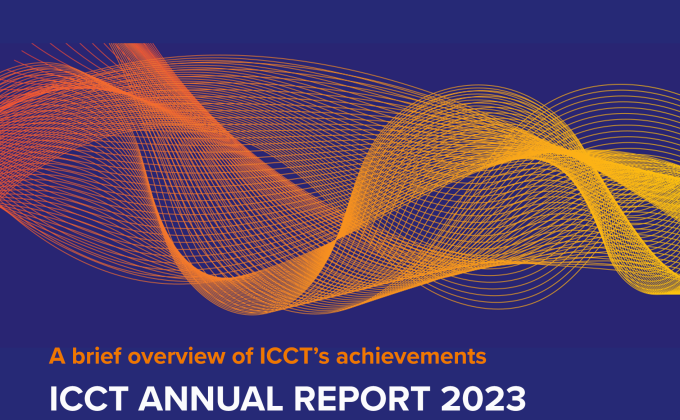Disclaimer: Primary sources, including quotations, are not linked within the text for ethical reasons. Readers interested in obtaining primary material may contact the author directly.
In the summer of 2020, the trial for Philip Manshaus, a 22-year-old Norwegian man who had attempted a terrorist attack at a mosque in Bærum, Norway the previous year, was underway. During the trial, it was revealed that Manshaus held National Socialist views, in addition to beliefs in conspiracy theories, and had been inspired by the Christchurch terrorist in New Zealand a few months prior to carrying out the attack. Manshaus had also notably murdered his adopted step-sister from China shortly before attempting the mosque shooting.
Despite international media coverage of the trial, left unreported during the proceedings was the fact that Manshaus was an avid viewer of Red Ice TV, a white nationalist alternative media outlet based in the United States and Sweden. The co-founders of Red Ice TV are wife and husband duo, Lana Lokteff and Henrik Palmgren. In the weeks leading up to the attack, Manshaus became obsessed with finding a wife, having white children, and settling down in the Norwegian countryside in order to preserve the white race.
The impact of women in far-right extremism is more consequential than most people realise. Although it is easy to spot the deadly effects of terrorism, there is something much more sinister about how women can appeal to young men to join far-right extremist movements, aiding them in the radicalisation process.
For two years, I researched female leaders, such as Lokteff, in far-right extremist movements in North America and Europe. I found that women play several roles in far-right extremism: they are key recruiters, propagandists, organisers, and fundraisers. As Seyward Darby writes, “women have been in backrooms and classrooms, chat rooms and newsrooms, boardrooms and bedrooms. Far from being incidental to white nationalism, they are a sustaining feature”. Today, far-right women are taking to social media sites to recruit followers and build audiences for the movement. But unlike the dark web and fringe forums, these women prefer to spread their message on mainstream platforms like YouTube, Instagram, and Twitter. This is part of a strategic objective to help mainstream fringe ideas for popular appeal.
In this Perspective, I focus in particular on the role of female far-right social media influencers who used gendered narratives in recruitment and radicalisation towards achieving community building and a sense of belonging in the far-right. I call these women influencers, building upon Lewis’ 2018 study of the alternative influence network, because they serve as leading personalities commenting on issues and ideas within the far-right online community. Understanding the impact of these women and how they shape dominant narratives within the far-right is crucial towards developing effective P/CVE interventions, which often overlook the importance of gender dynamics in shaping an individual’s worldview. This Perspective further enriches the lacking research on the role of women in contemporary far-right movements, as academic literature on this topic is scarce; it aims to stimulate a more nuanced discussion relating to women's (and men's) involvement in the far-right scene.
Red pill vlogs
A key point is that recruitment and radicalisation should be understood interchangeably: sometimes an individual is recruited and then radicalised into the far-right, other times it is vice versa, and often it can occur simultaneously as an interlinked process. Operating within online spaces further complicates this dimension as the boundary between contact and exposure is blurred.
A popular medium for recruitment by far-right female influencers is through YouTube, where vlogs (video blogs) feature these women streaming through webcams, sitting in a living room or bedroom, and positioned directly in front of the viewer like a conversation setting. This format of interaction makes the viewing experience feel casual and personal, where viewers can react and interact through comments and “likes”. Media scholars describe this relationship as networked intimacy, in which influencers use techniques that make them seem authentic, relatable, accessible, and responsive. They reveal details of their personal lives by discussing struggles and emotions, drawing attention to their lived experiences.
Bearing networked intimacy in mind, far-right female influencers often take part in a genre of YouTube that I term red pill vlogs. The red pill is a euphemism to signal the first step of radicalisation in the far/alt-right. It refers to the 1999 film The Matrix, in which the protagonist Neo is offered to take the red pill, and be awakened to the truth, or take the blue pill, and continue to remain in a life of ignorance. For the far-right, being red pilled equates to “an awareness in which the entire spectrum of feminists, Marxists, socialists and liberals have conspired to destroy Western civilization and culture… awakened to the reality of ‘white genocide’ and the ongoing ‘race war’”—similar overtones to the Great Replacement conspiracy theory that motivated the Christchurch shooter in 2019.
The first video featured on these far-right female influencers channels is often centred upon their red pill journey. They discuss their background: most grew up in middle class families and neighbourhoods, attended university, and began a professional career, often climbing the corporate ladder. They lived in urban metropolitan areas, and took part in normal socialising activities with friends and colleagues. This reflects a similar finding to Kathleen Blee, who observed in interviews with extreme right women nearly twenty years ago that most were educated, were not poor, nor grew up poor. Further, Blee found that most women were not raised in abusive families, nor did all women follow a man into the movement. This is similarly the case with far-right female social media influencers today, who describe growing up in loving homes with strong family bonds. Some indicate that they were influenced by conservative fathers to become involved in far-right politics, and while many had met their future husbands through this milieu, romantic relationships did not guide their initial entry into the movement.
Then these far-right female influencers all describe a change in how they began to view the world, which they frame as the beginning of their red pilling. “I can’t really pinpoint to one specific thing that caused that to happen, it was like a domino effect,” says one influencer in a video that has amassed almost 250,000 views. Another influencer, in a video with over 330,000 views, has a similar take: “Like most people, it wasn’t a definitive event that caused it.” The process of recruitment and radicalisation often happens incrementally, sometimes years. As Blee notes, the retelling of their “journey” is convoluted, contradictory, and can even go as far as to “reshape stories, even memories, of their past” in order to fit their present activism. Most of these influencers attribute this shift to becoming deeply unhappy, unhealthy, and depressed with their life situation. As a way of understanding their past selves through their present selves, they blame feminism and liberalism for their unhappiness. They believe that feminism has created the conditions for women to be “unnaturally” competitive, and the only means to solve this is to return to a society in which women and men have a clear division of roles corresponding to the domestic and public sphere. Traditionalism becomes the antidote to feminism.
A follow up video to the red pill vlog often features these influencers discussing the loss of social support networks, such as family and friends, which is common. Yet, these influencers justify their decisions as worthy and courageous, as finding their true selves. However, this hides a hateful ideology and movement by masking it with narratives of authenticity and self-confidence.
Bonds of sisterhood
Understanding the personal and social background of these influencers is important towards situating their recruitment approach. They often employ different narratives to appeal to women and men separately. For female recruits, these influencers promote a narrative of sisterhood and friendship, in which they encourage women to find their true happiness in the far-right movement. According to them, mainstream society is dominated by feminist thought, in which women are unhappy because they are forced to go against their supposed natural instincts, i.e. become a housewife and mother instead of a professional career.
One influencer posts on her Instagram page before-and-after photos. For the first “before” photo she self-describes as “Under-eating, in a bad relationship for 7 years, heavy smoker, feeling numb inside, lost”. She is clearly reflecting on a painful past, one that her followers may relate to in their personal lives. However, in the second “after” photo, she writes “Eating healthy, married and pregnant, off all drugs, feeling joy and gratitude for my life, saved.” Now, she is experiencing a stable and happy life after having been red pilled. She continues by stating that “these pics were taken 4 years apart and it didn’t happen overnight! You’ve got to put in the work for the reward!! Be patient with yourself, de-programming is a long process”. The word choice of “de-programming” has become a euphemism for being red pilled among the far-right. The implication is that the process of red pilling can take much time, sometimes years, to achieve. This once again echoes Blee’s findings among extreme right women nearly two decades ago. As this influencer states in another instance, her intended audience is not just “conservative, trad [traditional] women”, but attempting to reach a demographic including “a recovering feminist who’s in her early thirties”, as well as “a young, trad Cath [Catholic] woman who desperately wants to start having babies.”
Interestingly, this influencer also includes the phrase ‘Glow Up’ in the same Instagram post. Glow up is a popular term that refers to a process in which an individual achieves their best physical and mental self, often over an extended period of time. Here, glow up is being equated to the red pilling journey – the first time that I have come across the use of this term in this context. At first glance, the message in this post isn’t political in nature. Stories of personal glow ups can be found across the Internet, with millions of Instagram posts using the hashtag. Previous research has shown that Instagram is a popular platform for users to express their personal challenges, resulting in social support and a sense of community. But using coded language, such as ‘de-programming’, and weaponising terms like ‘glow up’, hints at far-right narratives regarding essentialist gender roles and red pill journeys. It is through having insider knowledge about the subtle cues of far-right propaganda that one can detect a personal story is being linked to a political cause. This can not only be misleading for viewers who may be unaware of the content they are interacting with, but also helps “mainstream” the message so that it appears acceptable and normal.
Similarly, the message that these far-right female influencers promote to young women centres upon the bonds of sisterhood.
As one Instagram post reads in the caption, “It’s hard making female friends these days in a world of feminism and cattiness”, signalling that mainstream feminism is the reason for women’s lack of social connection. The message is clear: join us and you will find like-minded women like us who care about traditional values like femininity. Based upon the comments received on this Instagram post, the influencers in the photo created a follow-up YouTube video addressing these concerns. In the video, they echo the idea that feminism destroys genuine, deep friendships between women because it forces them to act as “alpha females” in achieving social dominance. Additionally, these influencers argue that society encourages “destroyed relationships” in which dating no longer serves the purpose of marriage, so men are treated by women as disposable. Using networked intimacy techniques, these influencers are having this conversation sitting next to each other on a hotel bed, laughing and joking through a casual chat. Quite abruptly, the video’s ending changes topic to a brief update of their plans for the Defend Europe mission, organised by the youth-led Identitarian Movement in the aftermath of the so-called refugee crisis of 2015, in which they blocked ships carrying migrants from entering the Mediterranean Sea. These influencers were on the ground mobilising and reporting coverage of the event, telling the “truth” that the mainstream media refused to reveal.
Asserting masculinity
When it comes to recruiting and radicalising men into the far-right, these influencers appeal through narratives centred upon masculinity. In particular, they claim that feminist-controlled mainstream society is anti-men and prevents men from asserting their “natural”, biological masculinity. If male viewers join the far-right, however, they will be able to demonstrate aggression, dominance, and leadership, which is allegedly denied to them in mainstream public spaces. One influencer discusses in a YouTube video that male resentment, anger, and social isolation are (falsely) the consequences of feminism: “It comes as absolutely no surprise to me at this point that movements like the men’s rights movement have gained such popularity. Men are tired of being shamed of their inherent qualities, such as masculinity.” In other words, society restricts men (and women) from exercising their “natural” masculine and feminine traits. Male supremacism and misogyny, while ideological drivers of adjacent online spaces like the manosphere, are also fundamental to the far-right’s understanding of men’s and women’s roles.
A surprising aspect is how frequently these far-right female influencers make attempts to reach young men. Another influencer, who polled her Twitter followers on suggested topics for her next YouTube video, created content specifically targeting men who want to red pill their wives, girlfriends, sisters, mothers, etc., based on crowdsourcing feedback.
In a video, she breaks down for her male viewers the various strategies to red pill women. She begins by reflecting on her own experience, and considers what convinced her to “see the world realistically”, claiming that red pilling is difficult due to the “disproportionate societal advantage” that women enjoy today thanks to feminism and liberalism. She recommends that men initiate the red pill process by pointing to the contradiction that women have all the power, but are still “woefully unhappy”. It is considered a bonus if men can back this claim with a “garbage leftist [news] source” so as to encounter less resistance from the woman in question. In the next steps, she cautions her male viewers about the extremity of content they can share, recommending to test a woman’s susceptibility to “hard truths” at first. She reminds her viewers that the process of “unlearning” a lifetime of liberal indoctrination can take a long period of time, even years (again, like de-programming). To aid this process, she recommends YouTube as an instrumental tool, citing in particular far-right male YouTubers. Also recommended is asking thought-provoking questions and presenting data as evidence. The key, she notes, is to do this incrementally, “so as not to strain your relationship”, and to “push her mental boundaries slowly”, or else the woman will get defensive early on.
Most importantly, this influencer emphasises to lead by example. “Be a strong man who promotes traditional gender roles. Share information with her that you find interesting or important. Challenge her worldview when necessary. Have mutually understood expectations of her role as the woman and the nurturer in the relationship”, she explains. Over time, she insists, the woman will become more traditional if these gender roles are reinforced, and this will lead to awareness of femininity and masculinity.
Lana Lokteff, the influencer who inspired Manshaus before carrying out his attack, has a history of appealing to men to join the far-right. On her podcast, she predominately features other women in the far-right, providing them a platform to speak about their experiences. Inevitably, conversations shift to relations between women and men, and the far-right’s promotion of feminine and masculine gender roles. In one podcast episode, a conversation between three far-right women bears the title Dear Cucks, Only One Kind of Nationalism Will Save the West, implying that ethnic nationalism will save Western civilization, and it is upon men to assert this agenda. Thus, this call to action bears the burden upon men to be the warriors and protectors of the white race. Lokteff’s mobilising rhetoric is described by far-right scholar Ashley Mattheis as civilization being the “ultimate romantic gesture” that white men have provided to white women. This narrative is frequently circulated by women within the far-right online milieu.
Conclusion
The extent to which these far-right women are able to recruit and radicalise large numbers of other women and men into the far-right movement is unknown. Part of the difficulty in assessing their impact is an inability to access their followers. However, during my research, I interviewed a young man who had been radicalised into the far-right through watching YouTube videos, and now identifies as a former. I asked him if he had come across any of these female influencers, and he mentioned several that are discussed in this Perspective. This young man had described how, back then, he had “a very traditionalist view of gender”, and figures like these female influencers reinforced that worldview:
"I saw it as a really essentialist thing that was like, this is what Western civilization was built on, these family structures. If we destroy them, everything falls apart. It was like a very existential threat, that’s why there’s always an urgency."
Narratives of societal degradation (apparently caused by feminists and leftists) and the need to restore order by starting with the nuclear family unit is a prevalent talking point across these far-right female influencers. This clearly affected the young man who had been radicalised online— as it did with Manshaus. I asked him, what would be the purpose of these women, if not to recruit men? “These movements kind of need to have women in them. I mean, why would anybody want to join a movement if there’s no women?”, he replied. A movement without women is doomed to fail indeed. A crucial aspect of the far-right is that women serve to legitimise and normalise the movement by presenting it through more subtle framing. This insidious role, and its effects, should be taken seriously when we assess the drivers of terrorism.









